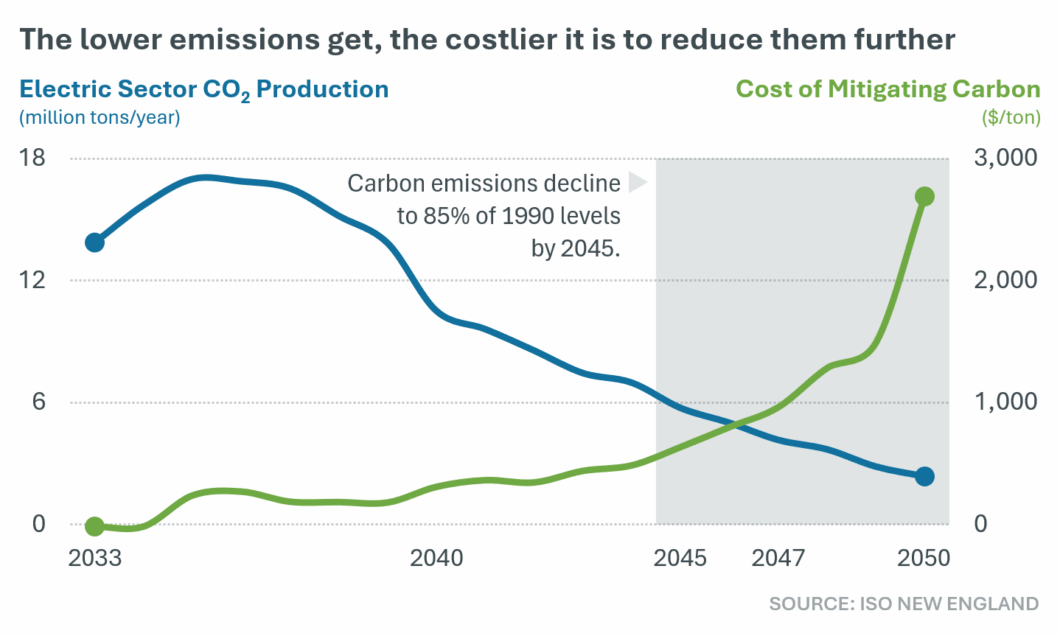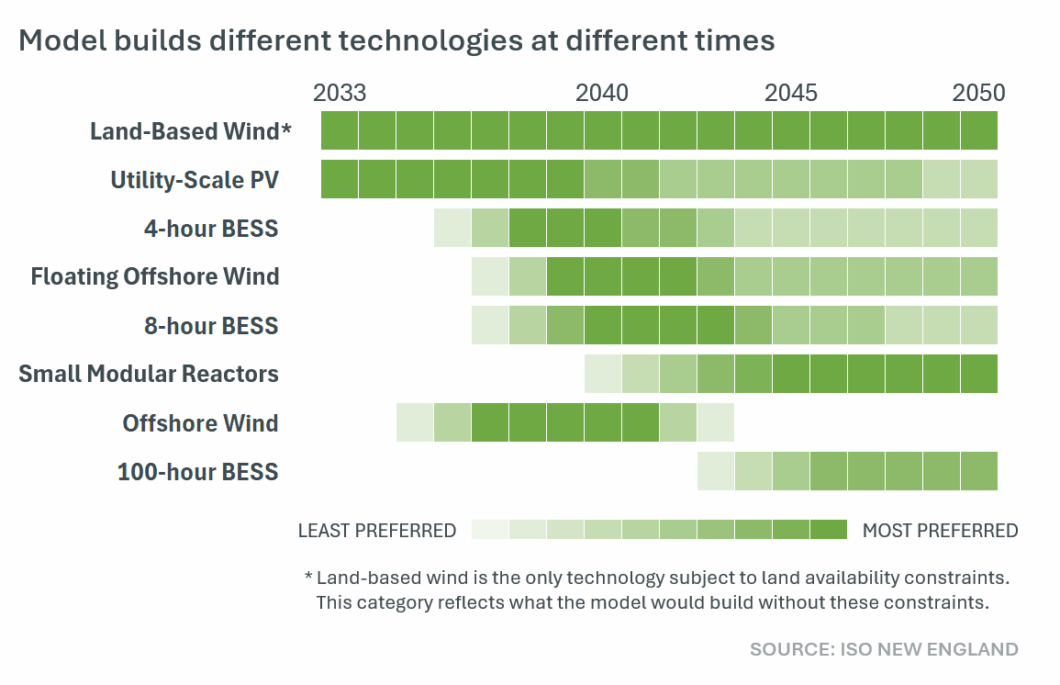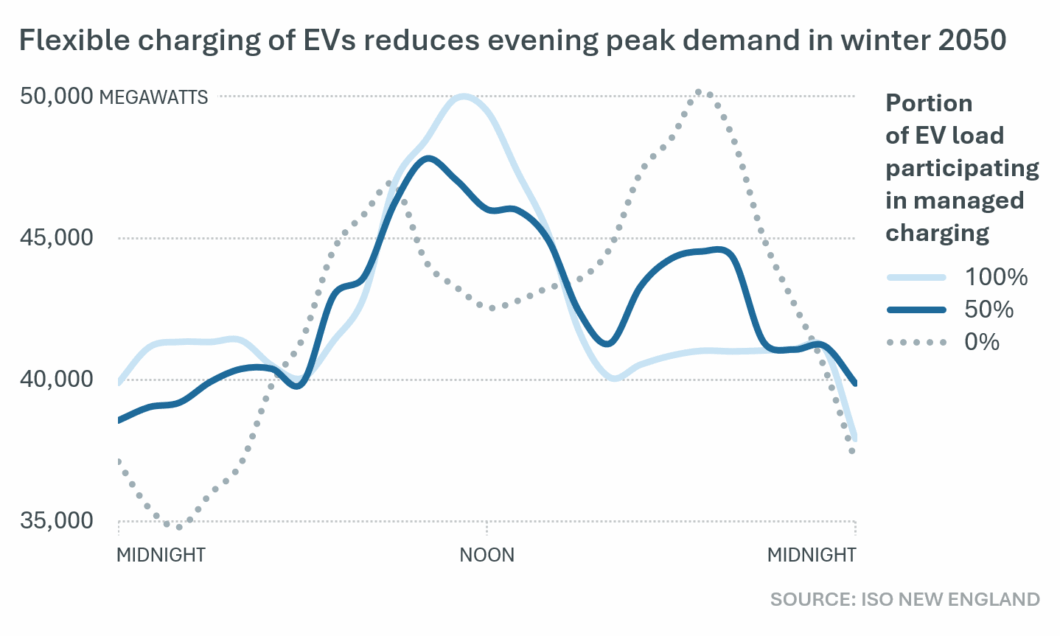ISO-NE’s 2024 Economic Study explores possible strategies to reduce emissions in New England’s evolving grid

Achieving 85% of the New England states’ carbon dioxide (CO2) emissions reduction goals by 2045 may be possible through a combination of mostly solar, land-based wind, and short-duration energy storage, according to ISO New England’s latest economic study report, New England’s Evolving Grid.
Most New England states have set ambitious goals to reduce CO2 emissions by at least 80% from 1990 levels by 2050, with some states adopting targets of up to 100%. The ISO’s 2024 Economic Study models possible versions of the 2033 through 2050 regional grid, investigating how a future power system build-out of solar photovoltaics (PV), wind, small modular reactors (SMRs), and energy storage (BESS) might achieve policy goals while operating reliably and cost-effectively.
Key 2024 Economic Study findings
Emissions reductions beyond 85% of policy goals drive rapidly escalating costs.
As decarbonization deepens, costs begin rising at a higher rate, driven by the more expensive zero-carbon dispatchable technologies required to decarbonize extended cold snaps in winter.

Demand growth also increases costs beyond the 2040s.
Before 2040, the modeled 2033 resource mix can serve forecasted demand, and new resources are needed only to meet emissions targets. From 2040 onward, though, new resources are also needed to support demand growth. Rising electrification of heating and transportation both contribute to this growth — the last 15% of electrification drives an 18% increase in costs.
Land-based wind is consistently economical from 2033 to 2050, while PV supports early decarbonization.
Different technologies become more or less cost-effective at different times over the study’s timeline. Land-based wind is the most consistently cost-effective at reducing carbon emissions over the entire study’s timeline — including more of this technology reduces the total build-out cost. Utility-scale PV is similarly cost-effective at reducing emissions, primarily before the 2040s.

Shifting the hours of peak demand in winter reduces costs.
Encouraging consumers to charge electric vehicles during the day instead of at night could take better advantage of future high PV production and help reduce the need for more expensive zero-carbon dispatchable technologies. Shifting 100% of the 2050 EV fleet to a managed charging program reduces future costs by an estimated 12%, or $18 billion.

Deep decarbonization in the 2040s drives increased curtailment of renewables and reduces the economic viability of certain technologies.
Over time, newly added renewables are curtailed for more and more hours of the year, a sign of increasing system inefficiency. Batteries cannot shift enough energy from spring, fall, and summer to winter to eliminate the need for fuel-reliant generation. Long-duration storage is often depleted in future winters, and zero-carbon, fuel-reliant dispatchable generators like SMRs are necessary to meet winter peaks.
Including more dispatchable technologies reduces needed system capacity by over 15%.
Including zero-carbon SMRs and long-duration BESS makes for a more cost-effective build-out than one without them. And combining some or all of the strategies explored in the report could reduce costs even further.
All results are based on modeled future years, and do not necessarily represent physically realizable plans.
- Categories
- Publications
- Tags
- clean energy, new england states, system planning
